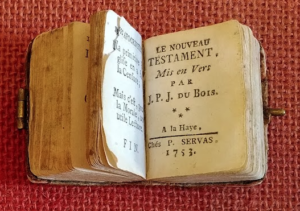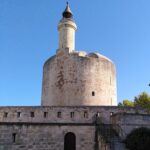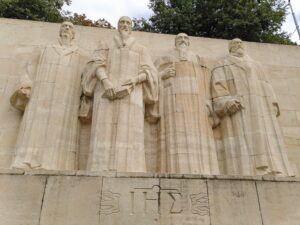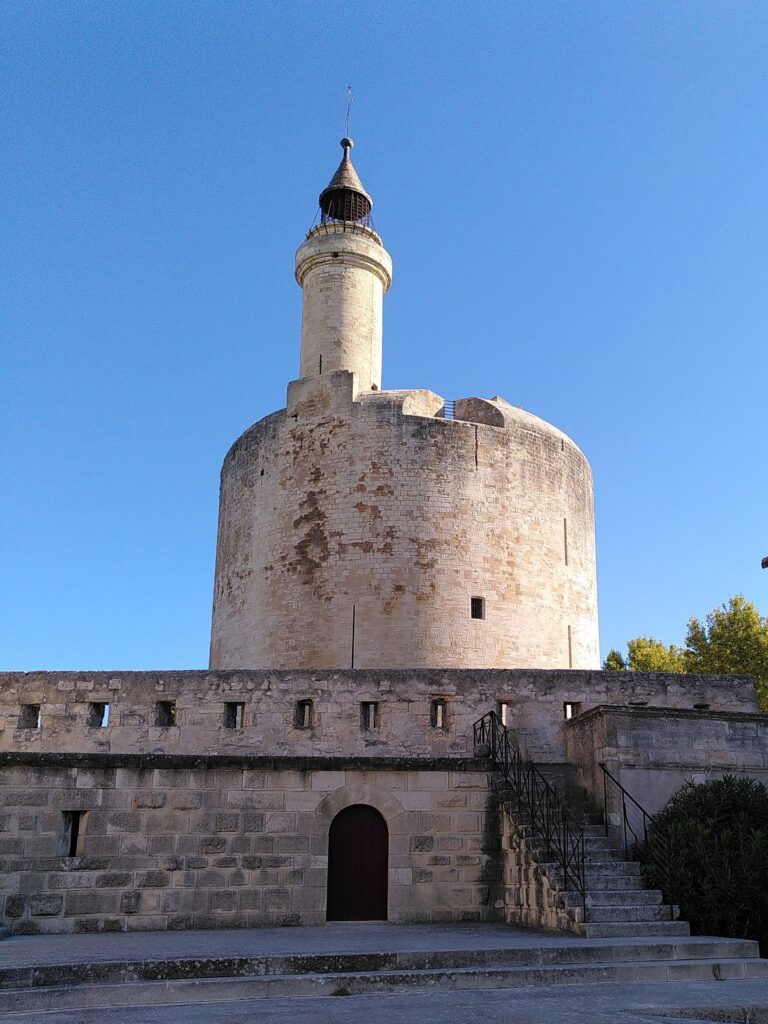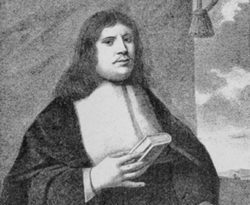Ever heard of a Chignon Bible?
Louis XIV considered a person who possessed a Bible to be a traitor, a member of a rival church. Bitter persecution of Protestant believers spread throughout France. To avoid discovery, a Huguenot woman often hid her micro Bible in her hair bun or chignon.
I joined the week-long guided tour ‘In the footsteps of the Huguenots’, visiting historic sites in the south of France. The Musée du Désert – from outside a dilapidated old farmhouse in a tiny village – impressed me most of all. A very knowledgeable guide led us through the immaculately presented rooms. Original artefacts, pictures, letters and royal bills documented events and rising tensions of 16th to 18th century France. The Wars of Religion, culminating in the Saint Bartholomew’s Day Massacre of 1572, only ended when King Henry IV signed the Edict of Nantes in 1598. At last, Protestants in France received civil rights and many liberties.
Revocation
But this uneasy peace did not last long. In the middle of the 17th century, Louis XIV, the Sun King, insisted all his subjects should belong to the same Church. He revoked the treaty and banned the religion prétendue réformée. Persecution of Protestant believers once again revived. Protestant pastors had fifteen days’ notice to leave the country. All other Huguenots had to recant – or abjure – their faith and attend the Catholic mass. Refusal meant arrest and often brutal treatment.
Men risked a lifetime of enslavement chained to a galley oar. Women faced imprisonment in the infamous Tour de Constance. In desperation, many faithful Huguenots risked perilous journeys to escape illicitly to neighbouring countries including the United Provinces (Netherlands), England, the Channel Islands, or even the New World or South Africa.
Some, known as Camisards, hiding among their familiar Cevennes hills, ganged together to resist the invading dragoons from the North. The Musée du Désert is located in the home of one such guerrilla fighter, Roland Laporte.
Our tour started at the famous Reformation Wall in Geneva, which commemorates many of the the principle players of those traumatic times.

